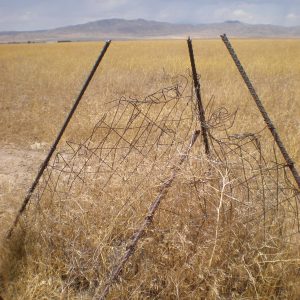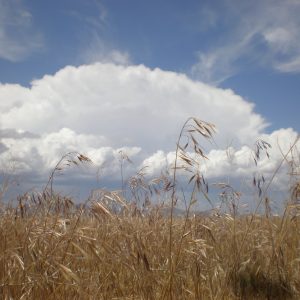Coming from the East Coast, it’s interesting to think about the idea of “land management.” The concept seems broad, encompassing a whole range of activities under one blanket term. Are we protecting wildlife (or wild life, to use that simple but significant difference in the term)? Do we see the work as resource preservation or resource conservation? Or something else?
I just spent the last few days with the Cedar City BLM range crew, mainly to familiarize myself with the vegetation, though we barely scratched the surface. The surprising part was that I had never been exposed to “range” work before, especially as a field of study. The range crew told me that we were surveying the BLM grazing allotments for vegetation species and abundance. This was my first surprise. In the East, land seems to be categorized quite specifically for its use. But here we were, out on one small plot of the millions of acres of BLM land to see how the land is suited for grazing. Meanwhile, some of my other seasonal counterparts were out surveying the vegetation in other areas to see if it was adequate habitat for sage grouse.
On the first day, we visited a site that one of the range crew workers said “we should’ve surveyed by satellite;” it was parched and primarily filled with cheatgrass. Even the range cage, set up to protect a small plot of vegetation from grazing animals to see what grows in their absence was crumpled and full of taller cheatgrass. Biologists and rangeland managers alike would see it as problematic, and we joked about how a squatter could find a home there and never be bothered about it. Through my eyes, born and bred in the eastern U.S. and used to seeing an obvious purpose, plan, direction, or advantage in the state of the land, I was struggling to see this land’s place in the BLM’s grand scheme. With all the millions of acres, how do we look at this one site and see its potential for sustaining livestock with diverse vegetation for years to come?
Keep in mind, I understand the importance of this work. I see that this public land is in high demand for multiple uses and that our branch of the government spreads its resources thin over a diversity of projects with lofty goals. My simple point in these observations is that I am looking at a new landscape through alien eyes. I’m excited to spend these five months learning not only how land management works on the ground, but also how to look at the landscape and see all of its potential. I heard a long time ago that landscape conservation is all about seeing what could be and wrestling to make it happen. If I see an endless field of cheatgrass and a bludgeoned range cage, I want to see how it could become an ideal landscape. I want to see how our influence can take effect for the better.



